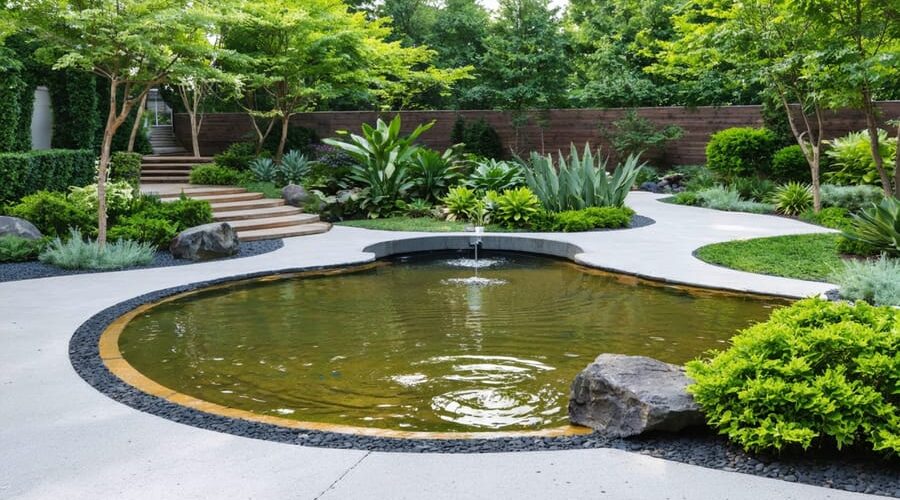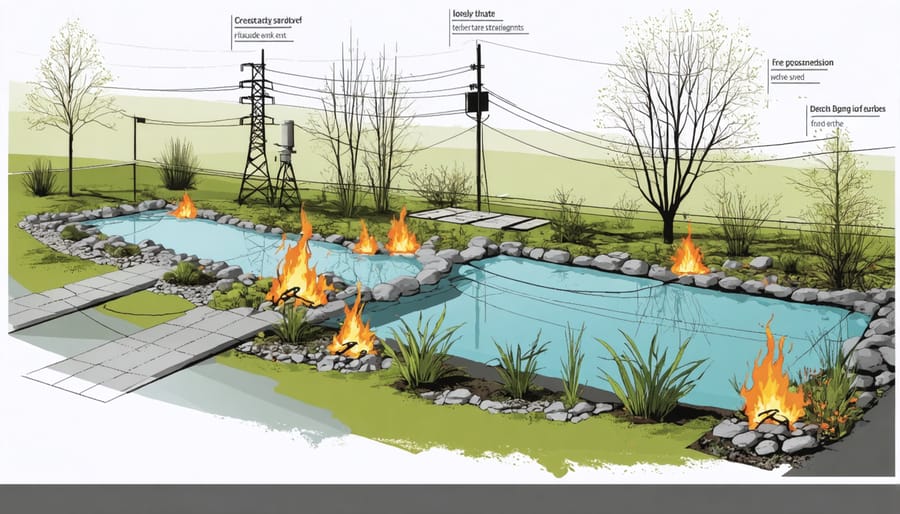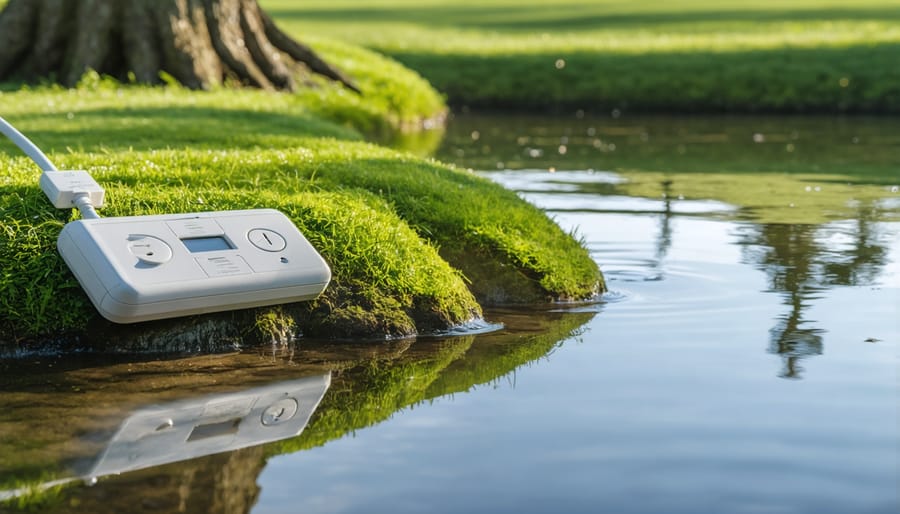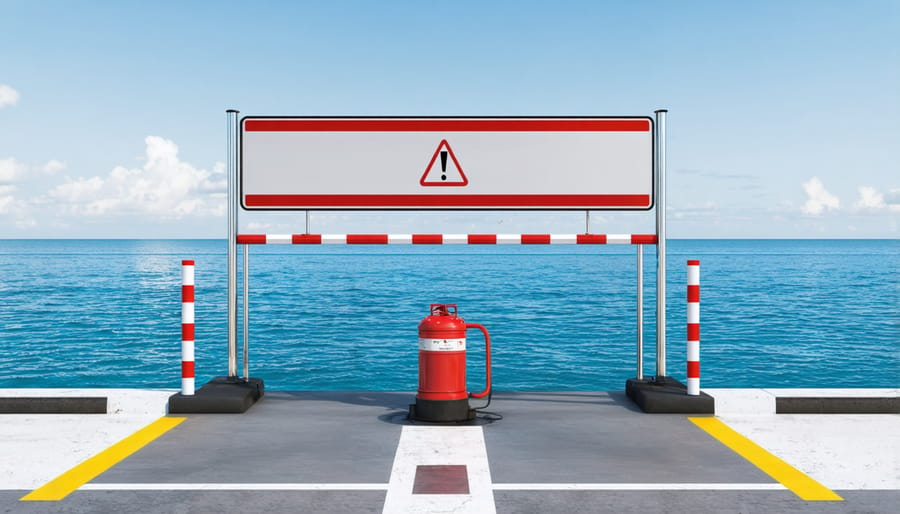
Keep Your Water Garden Safe: Essential Fire Protection Strategies
Transform your water garden into a vital fire safety resource while protecting your aquatic paradise. Water features aren’t just beautiful additions to your landscape – they can serve as crucial emergency water reserves during fire events. Strategic placement of ponds, proper pump systems, and accessible water storage can mean the difference between minor damage and devastating loss during a fire emergency.
Your backyard water feature could be your first line of defense against unexpected fire threats. Whether you’re designing a new water garden or adapting an existing one, incorporating fire safety elements doesn’t mean sacrificing aesthetic appeal. From installing emergency-ready pump systems to maintaining adequate water levels year-round, smart planning turns decorative water features into practical safety assets.
This guide explores essential strategies for maximizing your water garden’s fire safety potential while preserving its natural beauty and function. We’ll cover practical design considerations, equipment recommendations, and maintenance tips that ensure your water feature remains both stunning and potentially life-saving.
Why Water Gardens Need Fire Protection

Hidden Fire Hazards in Your Water Garden
While water gardens may seem like natural fire deterrents, they can surprisingly harbor hidden fire hazards that many gardeners overlook. Electrical equipment, such as pond pumps, filters, and underwater lighting systems, can pose significant risks if not properly maintained or protected from water exposure. Faulty wiring or damaged cables near water features can create dangerous situations, especially during storms or flooding.
Organic debris accumulation around pond edges and in skimmers can become potential fuel sources when dry. Dead leaves, twigs, and other plant matter can create a fire-starting tinderbox, particularly during hot, dry seasons. Even seemingly harmless decorative elements like tiki torches, citronella candles, or landscape lighting placed near water features can become hazardous if positioned too close to flammable materials.
Solar-powered equipment can also present unexpected risks. Magnification of sunlight through water or curved surfaces might create hot spots, while malfunctioning solar panels or their wiring could spark fires. Regular maintenance, proper installation of electrical components, and maintaining clear zones around water features are essential for minimizing these hidden fire risks.
Creating a Fire-Safe Water Feature
Safe Electrical Installation
When installing electrical equipment around your water feature, following proper electrical safety guidelines is absolutely crucial. Always use weather-resistant, outdoor-rated electrical components and ensure all connections are properly sealed against moisture. Install a Ground Fault Circuit Interrupter (GFCI) outlet to protect against electrical shocks, and position it at least 5-10 feet away from the water’s edge.
Keep all power cords organized and secured, avoiding any contact with water. Underground wiring should be placed in waterproof conduits at the appropriate depth according to local building codes. Regular maintenance checks are essential – inspect cords for wear, ensure connections remain tight, and test GFCIs monthly.
Consider installing motion-sensor lighting around your water feature for added safety at night. If you’re not confident about electrical installations, please hire a qualified electrician. Remember, water and electricity can be a dangerous combination, so taking these precautions isn’t just about compliance – it’s about protecting you and your loved ones while enjoying your beautiful water feature.

Strategic Plant Placement
Smart plant placement can significantly reduce fire risks around your water feature while maintaining its beauty. Create a defensible space by keeping highly flammable plants at least 30 feet away from your pond or water garden. Choose fire-resistant plants like succulents, ice plant, or stonecrop for areas closest to your water feature. These plants retain moisture and are less likely to ignite.
Arrange plants in islands or clusters rather than continuous beds, creating natural firebreaks. Keep taller plants and trees away from structures, and maintain proper spacing between plants to prevent fire from jumping. Remove dead vegetation regularly, especially during dry seasons.
Consider hardscaping elements like gravel paths or stone borders between plant groupings. These not only look attractive but serve as effective fire barriers. For additional protection, incorporate moisture-loving plants near your water feature, creating a naturally humid microclimate that helps resist fire spread.
Remember to maintain clear access paths to your water feature for emergency purposes, keeping vegetation trimmed back from these crucial routes.
Fire-Resistant Materials
When creating a water feature, choosing fire-resistant materials is crucial for safety. Opt for non-combustible materials like concrete, stone, or metal for the main structure and surrounding areas. These materials not only look great but also provide an extra layer of protection against fire hazards.
For decking and walkways near your water feature, consider composite materials specifically rated for fire resistance. While natural wood might seem appealing, it’s more vulnerable to fire. If you must use wood, treat it with fire-retardant coatings and maintain them regularly.
Keep decorative elements like pergolas, benches, and plant containers away from potential fire sources. Choose metal or concrete containers instead of plastic or wooden ones. For lighting fixtures, select those with appropriate safety ratings and install them according to manufacturer guidelines.
Remember to maintain clear zones around your water feature by removing dried leaves, twigs, and other flammable debris regularly. This simple practice significantly reduces fire risks while keeping your water garden looking beautiful.
Emergency Water Access Points
Access Point Design
When designing water access points for fire safety, proper emergency water access planning is crucial. Create clear pathways at least 3 feet wide leading to your water feature, ensuring they’re well-maintained and free from obstacles year-round. Install stable platforms or reinforced edges around your pond where firefighters can safely position their equipment. Consider adding permanent markers or reflective signs that remain visible at night, making it easy for emergency responders to locate water sources quickly.
For optimal access, position dry hydrant pipes at least 2 feet below the water’s surface to prevent freezing and ensure reliable water flow. If your pond is set back from the main access road, install a dedicated gravel or concrete path that can support heavy emergency vehicles. Remember to maintain water levels above minimum requirements, typically 4 feet depth in designated draw areas, to ensure adequate water supply during emergencies.

Maintenance Requirements
Regular maintenance is crucial for ensuring your fire safety water system remains reliable in emergencies. Start by checking your water levels monthly, especially during dry seasons, and maintain them at optimal levels. Clean pump filters every three months to prevent debris buildup that could impair water flow when needed.
Inspect all pipes, valves, and connections quarterly for leaks or damage. During winter, protect exposed pipes from freezing by adding proper insulation. Test your pumps monthly by running them for a few minutes to ensure they start quickly and operate smoothly.
Keep the water source area clear of vegetation and debris that could restrict access. If you have a dedicated fire safety pond, remove algae and sediment annually to maintain water quality and pump efficiency. Document all maintenance activities in a logbook, noting dates and any issues found.
For areas with hard water, descale equipment annually to prevent mineral buildup that could affect performance during emergencies.
Regular Safety Checks
Maintaining a safe water garden isn’t a one-time task – it requires regular attention and monitoring. Here’s a comprehensive checklist to help you stay on top of your essential safety precautions throughout the year.
Monthly Checks:
• Inspect all electrical connections around your water feature
• Test pump functionality and water flow
• Check for any damage to liners or edging
• Clear debris from overflow areas and drains
• Verify emergency shut-off valve operation
• Ensure proper lighting around nighttime access points
Seasonal Inspections (Every 3 Months):
• Clean and maintain filtration systems
• Check water levels and top up if needed
• Inspect nearby trees for dangerous overhanging branches
• Review emergency access points for clear pathways
• Test backup power systems if installed
• Check stability of decorative features and rocks
Annual Safety Review:
• Update your emergency response plan
• Service all pumps and electrical equipment
• Verify emergency contact numbers are current
• Review and update property maps showing water access points
• Check fire extinguisher expiration dates
• Inspect and replace any worn-out equipment
Pro Tip: Create a simple maintenance log to track your safety checks. Note any issues you find and when they’re resolved. This record-keeping helps identify patterns and prevents small problems from becoming major hazards.
Remember to adjust your inspection schedule based on your specific climate and circumstances. During fire season or periods of extreme weather, increase the frequency of your checks. After storms or significant weather events, perform additional inspections to ensure everything remains secure and functional.
By following this routine maintenance schedule, you’ll maintain both the beauty of your water feature and its potential as an emergency water source.
Fire safety water management is a crucial aspect of responsible home and garden maintenance that should never be overlooked. By implementing the protective measures discussed throughout this article, you can create a safer environment while maintaining the beauty of your water features. Remember that regular maintenance, proper pump systems, and clear access points are essential components of an effective fire safety water setup.
Keep your emergency water sources well-marked and easily accessible, and ensure all family members know their locations. Regular checks of your water storage systems, periodic testing of pumps, and maintaining adequate water levels should become part of your routine maintenance schedule. Don’t wait for an emergency to discover issues with your setup.
Most importantly, work with local fire authorities to ensure your fire safety water system meets regional requirements. While we hope you’ll never need to use these preparations, having them in place provides peace of mind and could prove invaluable during an emergency. Take action today to protect your property and loved ones by implementing these fire safety water measures.
